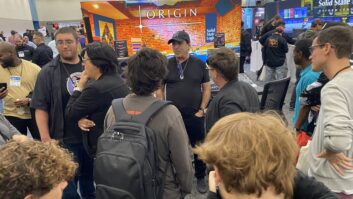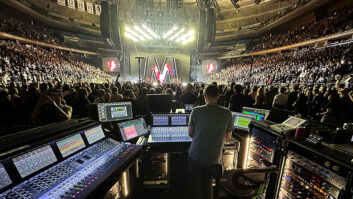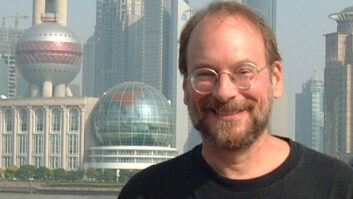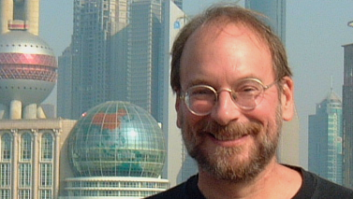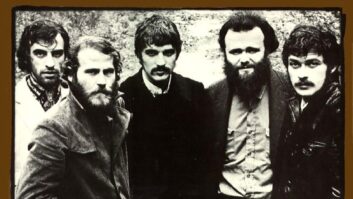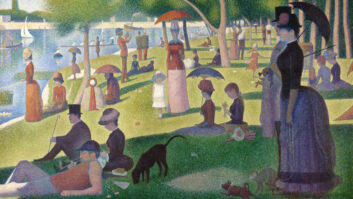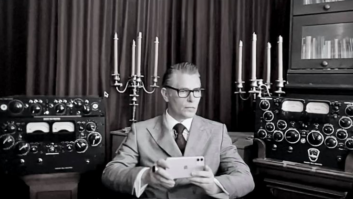We use the term “golden ears” every now and then in the pages of Mix, usually to describe an engineer whose taste and talents are beyond reproach and we’re not entirely sure why; they just are. In my early years at Mix, back in the 1990s, I remember it being attached primarily to mastering engineers, the Bob Ludwigs, Bernie Grundmans and Doug Saxes of our industry. Or to the rare talents of someone like a George Massenburg, who can design a parametric EQ and win Grammys for mixing. It’s a term of respect, and at the same time it implies mystery. What makes someone’s ears golden? And how do you get into the club?
My first real exposure to the concept of golden ears, in person, was through scoring engineers. I’ve written in this space before of how as a new editor at Mix, a colleague, Paul Potyen, took me to a 14-piece string scoring session for a Chevron radio spot. I saw the engineer pick out a bow-hitting-a-stand ‘clink’ as it happened. I hadn’t heard a thing. Later, at Skywalker Sound, I saw Leslie Ann Jones isolate a single flat note from a single third-violin on playback, within a full orchestra, deep into the piece. Needless to say, it was news to me.
I was lucky enough to attend a Bill Conti scoring session at Warner Bros, for The Scout and sit in the room with the musicians and then control room for playback and assessment. The quintessential fly on the wall. I was impressed later to find out that the amazing engineer Shawn Murphy traveled with his own set of PMC monitors. Same for the uniquely talented engineer Dennis Sands. Which brings us full circle, to this month’s cover story.
Sands has been serving as an audio consultant for the past year or so in the shakeout sessions at Vienna Symphonic Library’s remarkable new Synchron Stage Vienna. A meeting of Golden Ears. VSL has earned its place in the industry, with a reputation for meticulous attention to detail in its sampling packs. Painstaking precision over many years in fine-tuning its recording process. Think of the listening sessions surrounding the development of an orchestral library. It’s not that it is more difficult than doing rock drums or bass lines; it’s just that, well, it’s an orchestra, with a built-in expectation of the highest quality. VSL knows this. That’s why they created a world-class home base in Vienna. For the Golden Ears.
But I’ve also learned over the years that you don’t have to engineer a John Williams score or sample a violin at 24-bit/384kHz to have Golden Ears. I was reminded of that in putting together two other stories for this month’s issue. The first is a profile of Carlos Rodriguez-Quiros and his new studio in San Juan, Puerto Rico. He’s a classical guitarist of some renown, and an instrument designer who has spent a lifetime exploring sound, first using his musician’s ear and now from a recording perspective. The connection he makes between the inside of a well-made guitar and the response of a tracking/mix studio is most insightful. His entire life is about listening.
The second is a profile of a new music documentary by longtime friend of Mix Michael Coleman, called The Art of Listening. Through a most interesting cast of characters—from luthiers and synth designers to singer-songwriters and A-level film composers, from Andrew Scheps and Warren Huard to Gabe Roth and Gustavo Santaolalla—the relationship between listening and music is revealed in very personal ways, whether in a musician’s relationship to an instrument or an engineer’s response at the console. The common thread is that at the very least, you have to take the time to listen.
Take the time to listen. It seems so simple and yet it’s become increasingly more difficult. I don’t have the answer to what makes someone a Golden Ears, but I have no doubt that those in the club stop every now and then and take time to listen.
Tom Kenny, Editor, Mix
